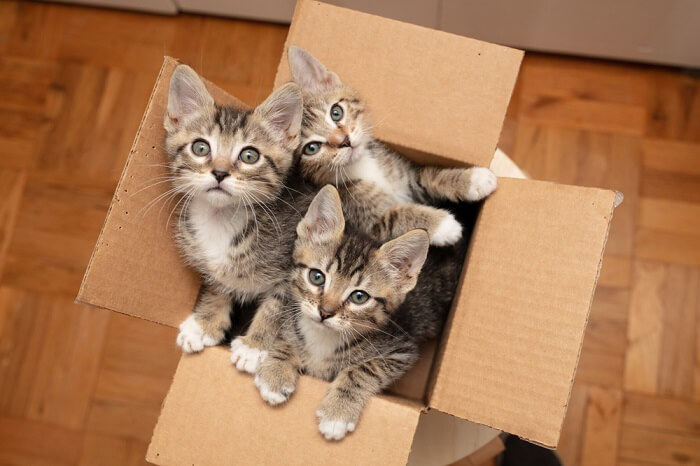
Fostering cats can be a very enjoyable and fulfilling experience. Whether you take in a newborn kitten or an adult cat, even though it may only be temporary, you have the opportunity to provide them with a loving and healthy home, as well as providing yourself with a lot of happiness along the way.
The need for fostering can be due to several different factors, such as overpopulation at animal shelters, a rescue group that doesn’t have access to a physical shelter, or stray and orphaned cats that simply need basic care.
Ultimately, the goal of fostering is to provide these cats with a safe and nurturing environment until they are able to be adopted into their forever homes. With kittens, this can mean keeping them quarantined until they are old enough to get fixed and vaccinated. With adult cats, this can mean rehabilitating them and keeping them safe until they are healthy and well-adjusted enough to be adopted.
What To Know When Fostering Cats?

Providing the fostered cats with personal space and a safe environment is key to making them feel at ease and preventing any harm to them or to your home.
Foster cats can sometimes be emotionally traumatized after being relocated into your home. So, make sure to be respectful of their mental health, and don’t force any unwanted interactions upon them. Give them their own, private space until they become comfortable in their new surroundings.
If you already have cats or other animals in your home, it’s important to keep your fosters isolated until they have received their vaccinations and booster shots. This will help to prevent your pre-existing animals from contracting any viruses that your fosters might unknowingly have.
Before bringing a foster into your home, have all of your supplies set up beforehand. These supplies include food and water, a litter box with litter, a scratching post or scratching pad, a comfy bed (or a simple cozy spot), grooming supplies, and some toys to play with.
6 Things To Keep In Mind When Fostering Cats
#1 Foster Cats Need Their Personal Space

Fostering cats is a significant responsibility, so it’s important to be prepared.
When bringing home a foster cat, it’s important to recognize that they are being relocated into a new and potentially confusing environment. The new sights, sounds, and smells of your home can be potentially traumatic to them at first, and forced interaction with them may lead to increased emotional unhealthiness.
So, it’s a good idea to give them their own, dedicated space so that they can gradually become comfortable in their new environment. Set up a simple, dedicated space with their own food, water, a litter box, and a bed or cozy spot so that they can get used to your home. Doing so will help with their emotional health over time.
#2 Keeping Your Foster Cats Quarantined
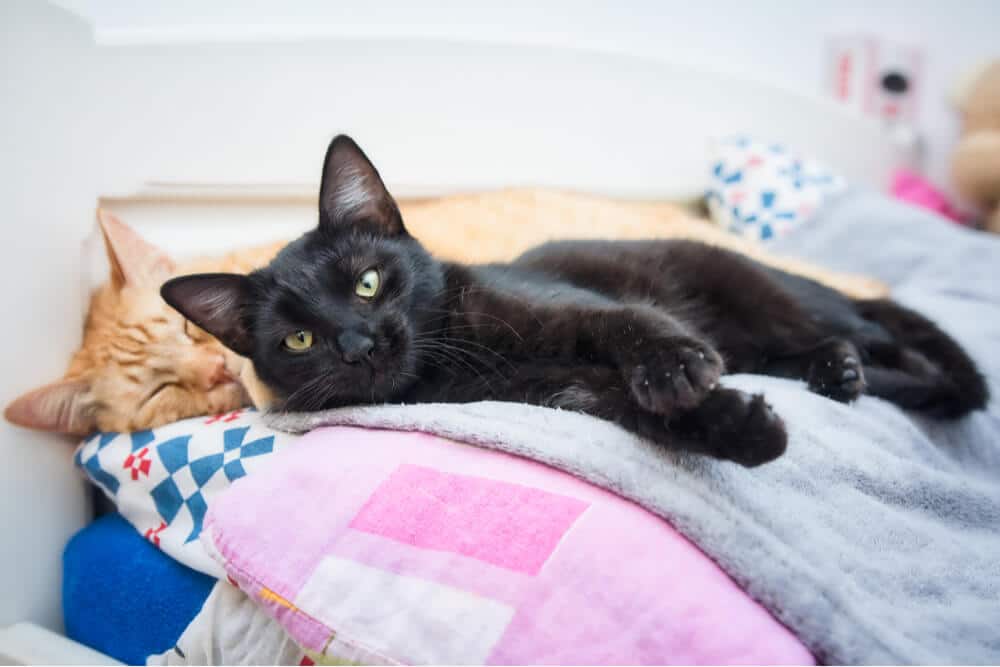
Whether you’re planning to bring home a new cat or want to keep the peace in your feline family, there are a few tips that will help you to create a harmonious, happy feline household.
Foster cats can unknowingly bring home fleas, ticks, and infectious diseases from the shelter where they had been living, and if you have other animals in your home, this can potentially lead to an outbreak. Also, depending on the shelter, your fosters may not have received all of their necessary vaccinations prior to you bringing them home.
Whether your fosters are kittens or adults, keeping them quarantined for the first 7-10 days will help to prevent unwanted health issues for any pre-existing animals that you may have. So, before you bring home your fosters, make sure that you have a dedicated space for them where your other animals don’t have access.
#3 Foster Cats Need Basic Supplies
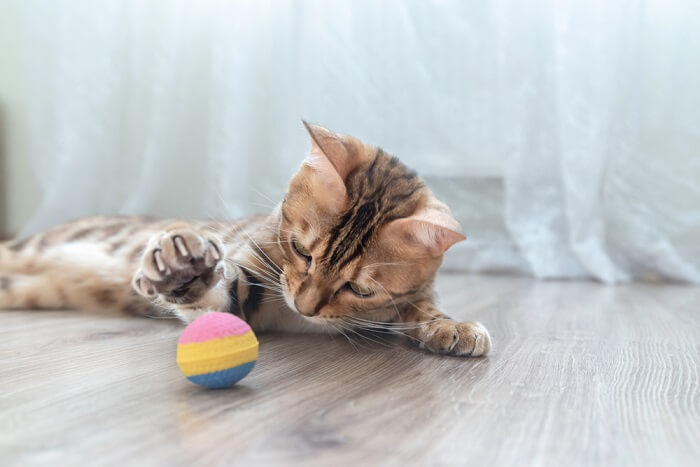
Cats require some basic supplies, so be sure that you have everything that they will need before you bring home your fosters. These supplies include food and water (and food and water bowls), a litter box and litter, a cat bed or cozy spot, a scratching post or scratching pad, grooming supplies, and some toys for them to play with.
Be prepared to do some experimenting to find out what kind of food, litter, and other supplies work best for your fosters. Once you figure out what makes them happy, it will contribute to their overall happiness and well-being. Also, knowing what food, litter, and other items make your foster cat happy will be very useful information to pass on when they are ready to be adopted.
#4 Provide Your Fosters With A Safe Home
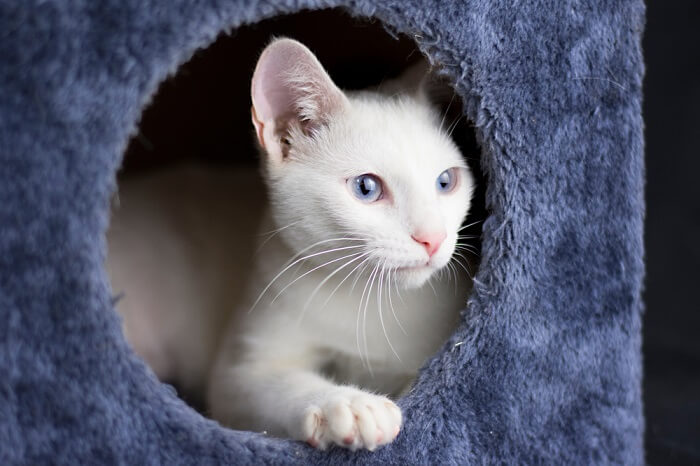
Cords, cables, and blind cords alongside houseplants are some of the first items a curious cat will start exploring and, for safety reasons, should be hidden and secured.
Cats are very curious by nature, and fosters are no different. Even if they might seem shy at first, foster cats will eventually become comfortable with their new environment and start exploring your home. So, it’s important to make sure that your home is free from any potential dangers that could be hazardous to them.
Cords, cables, and blind cords should be hidden and secured, and make sure that there are no potentially poisonous plants or flowers within their reach. Also, put away all of your cleaning supplies, toiletry items, cosmetics, and medications, and make sure that your toilet lids are closed. Also, keep all of your windows closed, and always keep your fosters indoors to prevent injuries and infections.
#5 Be Prepared For Veterinarian Visits
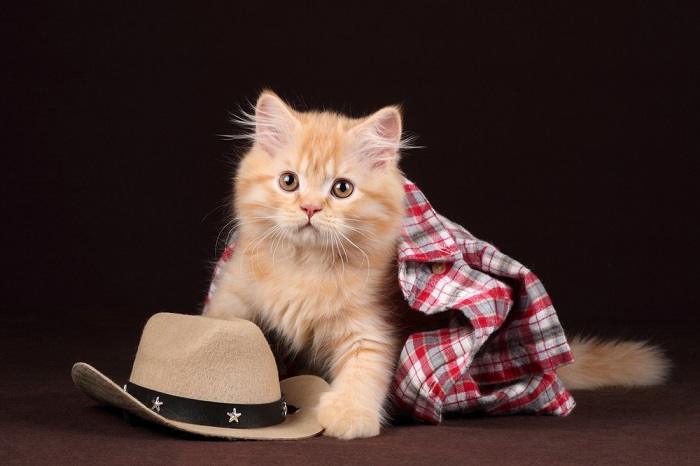
Even if your foster cats may appear to be healthy, there is a chance that they may have an infection or illness that was not detected while they were at their shelter. Foster cats will typically be examined prior to letting you bring them into your home, but they can potentially carry unknown illnesses that you or they are not aware of.
So, before you bring your foster cats home, check to make sure that there is a veterinarian or an emergency animal hospital in your neighborhood that treats cats. In most cases, you may never need to take your fosters to a vet while you are taking care of them, but it’s extremely important to be prepared if you see any signs of illness or injury.
#6 Fostering Cats Is A Commitment

Like with all animals, taking care of foster cats is a commitment, and it’s a decision that should not be taken lightly. Depending on the situation, you may be fostering for a few weeks or possibly for a few months, so it’s important to prepare yourself for both short-term and long-term commitments beforehand.
It can be emotionally draining for you and for your fosters if you aren’t properly prepared ahead of time. Even though cats are generally very independent, fosters require the right amount of attention on a daily basis in order for them to be happy and healthy, and for them to eventually be adoptable. And, again, making your fosters adoptable is your ultimate goal.
Final Thoughts

Fostering cats can be an incredibly rewarding experience for you, as well as being a wonderful and nurturing experience for the cats themselves. However, there are many things to consider and prepare for before you make the decision to become a foster parent.
That being said, if you properly prepare yourself, properly prepare your home, and know what you are getting into beforehand, you can help your foster cats to thrive and become happy additions to their eventual forever homes. Good luck with your fostering!







